Hands on: Fusion Garage Grid 10 review
The £259 Android tablet that's not an Android tablet
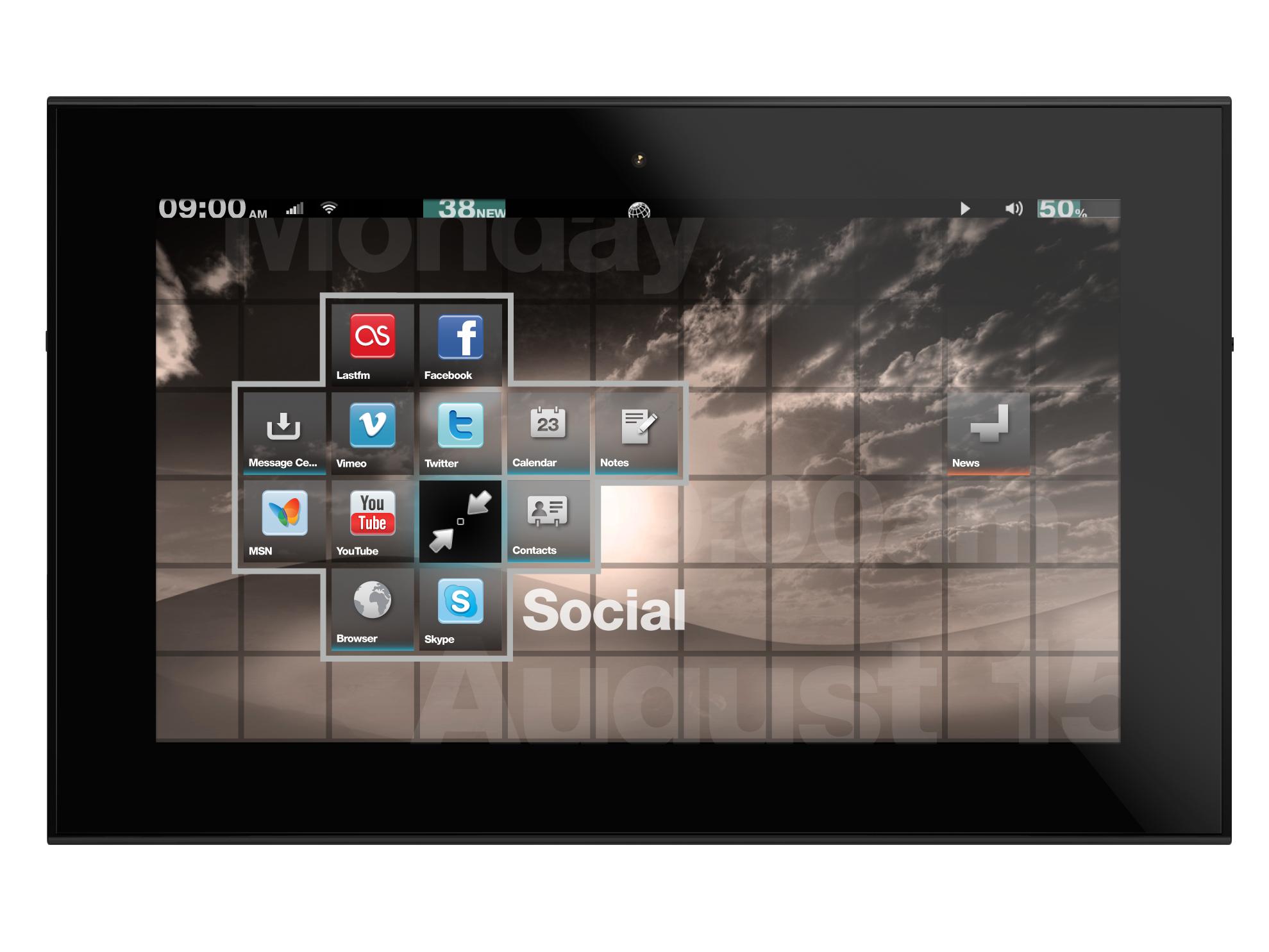
The Fusion Garage Grid 10 is an Android tablet unlike any other.
Of that there is absolutely no question.
It uses a new operating system called Grid OS, which is only related to other Android tablets in that it's built on top of the Android kernel. The kernel is the basic central component of the OS, which acts as the communications bridge between the apps and the hardware.
The upshot of this to the user is that the graphical user interface is completely different to any version of Android, but it still has the capacity to run Android apps. We'll come back to that a little further down the page.

Fusion Garage's Chandra Rathakrishnan with the Grid 10
The Grid 10 is fairly standard-sized for a 10.1-inch tablet. It weighs 689g, and is powered by the familiar Nvidia Tegra 2 chip. There's only 512MB of memory in there though, no rear-facing camera (there is a 1.3MP front-facing snapper) and only 16GB storage.
It's only 14mm thick, which is pretty good for a budget tablet with a screen this size.
Get daily insight, inspiration and deals in your inbox
Sign up for breaking news, reviews, opinion, top tech deals, and more.
The screen is sharp, with a resolution of 1366x768 which makes it higher than the iPad. However, in general the screen is one of the areas where this tablet appears to fall down. Vivid and bright this tablet is not, even with settings on maximum. It's not awful - it's just not in the same league as the more expensive Galaxy Tab 10.1 or the iPad 2 in this regard.
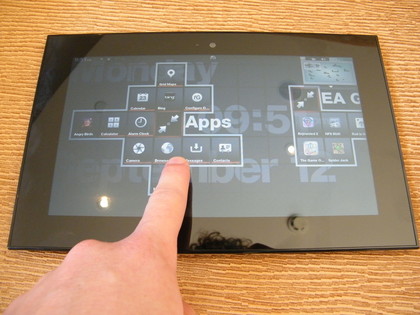
So far, so ho-hum then on the specs, then. But there are two trump cards up this tablet's microSD slot.
The first is the aforementioned Grid OS. The second is the price – this tablet is set to cost just £259 when it gets released at the end of October. That will jump to £359 for the 3G model when it's ready – still an attractive price.
The market is crying out for a useable tablet for less than £300 and we might just have one here.
Grid OS
In place of a homescreen, Grid OS uses a giant never-ending grid where you can place your app icons. You can group these together in clusters, or leave them individually. Clusters can be expanded or minimised using one tap.
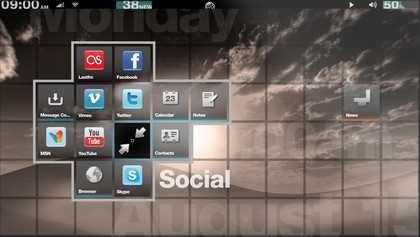
The Grid is many times bigger than the Grid 10's 10.1-inch display, which means lots of scrolling around. It's like playing some kind of 2D strategy game in space. There's a grid map at the top right of the screen, so if you tap that in the right place you'll skip straight to the cluster of apps that you want to access.
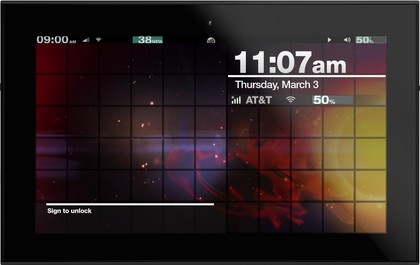
And here our problems begin.
Performance-wise, this all works pretty well – it's smooth, which is the main thing. But is it better than the standard Android/iOS method of grouping apps together on homescreens and menus? Of course it isn't. It's prettier, it's different and it's more fun – but it's not better and it definitely isn't quicker.
Grid OS requires that you know your device inside-out. You need an intimate knowledge of where your 'games' cluster is for instance, or which way you'll need to scroll if you want to get to your browser.
For this reason we foresee the novelty of the Grid wearing off after a while.
The OS is lubricated by a never-ending selection of what Fusion Garage likes to call 'motion picture-class animations' which make the process of expanding clusters, or opening menus look fluid and fun. It makes the whole experience appear more seamless, and more like an OS from the future – but again there is a novelty element in play here and we can see it getting old, especially if it ends up impacting battery life.
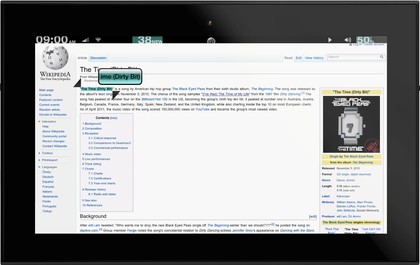
Another big part of the Grid OS is its ability to deliver information to your brain with the minimum amount of effort. Select a movie title on a web page, and you'll be presented with a list of options including links to search the web, to view film's page on IMDB or Wikipedia, or to buy the DVD on Amazon. To do this it uses a feature called 'Intelligence' – named entirely without irony by someone who has almost certainly never seen Team America.
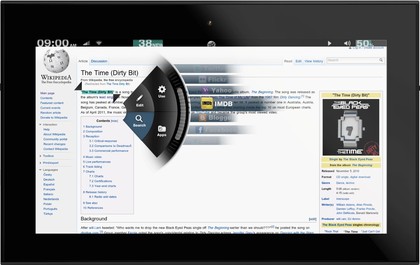
It's a compelling idea, and in the short time we had to play with the device, it seemed to work well. However, it does use Bing for its search which is curious and disappointing, especially as there is no way to change this.
Gestures
The Grid 10 has something in common with the stillborn HP TouchPad in that it uses gestures to navigate between screens. Unlike the BlackBerry PlayBook, the bezel is not part of the touch surface, and the gestures don't seem as robust as on the PlayBook either.
The gestures will maximise a screen, minimise back to the Grid, go back or go forward. All standard fair, but in our demo these gestures seemed to cause a few problems.
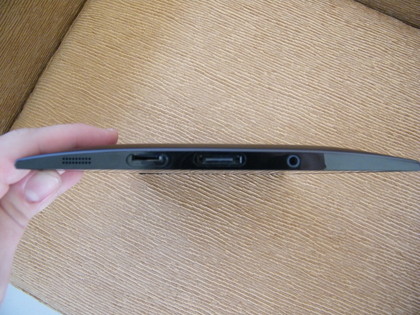
Even when our hosts from Fusion Garage were using the device, gestures would misfire with alarming regularity. It's a common problem with touch-based gestures (ever used the Microsoft Touch Mouse?) and we get the feeling it might get a bit annoying after extended use.
Apps
It should be mentioned that while the Grid 10 comes with many built-in apps for the likes of reading email and watching videos, it's missing the official Google apps you'd find on other Android tablets.
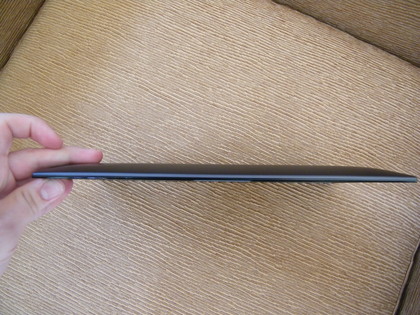
This means there's no access to the Android Market, and there never will be. However, you can still use the Amazon Appstore and Fusion Garage will shortly be launching its own App shop, so you probably wouldn't be inconvenienced hugely – it's still likely to be a bit of a pain though.
General performance
In terms of the overall feel of the Grid OS, our experiences were positive. The browser was good, scrolling and pinch-to-zoom was all fluid without any re-draws or stuttering. So actually, it's really not hard to imagine people getting on with this tablet.
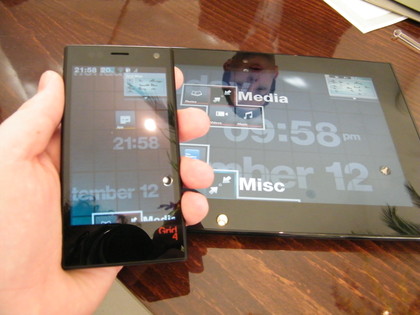
It won't be for everyone, and it has its flaws, but you know what? At just £259 the Fusion Garage Grid 10 has the potential to be the device that really kick-starts the budget tablet market. And considering this is the company that brought us the JooJoo, that's pretty astonishing.
James was part of the TechRadar editorial team for eight years up until 2015 and now works in a senior position for TR's parent company Future. An experienced Content Director with a demonstrated history of working in the media production industry. Skilled in Search Engine Optimization (SEO), E-commerce Optimization, Journalism, Digital Marketing, and Social Media. James can do it all.
